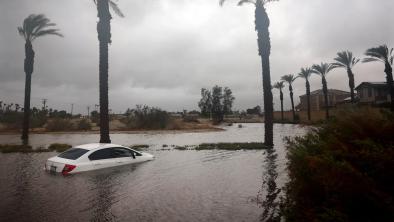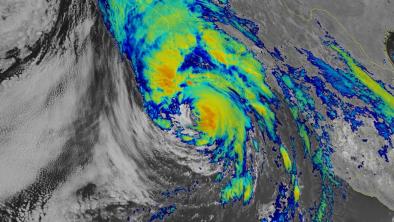Science Source
Normalized US hurricane damage estimates using area of total destruction, 1900−2018
- Finds that hurricanes are becoming more damaging and that the frequency of the very most damaging hurricanes has increased at a rate of 330% per century due, primarily, to global warming
- States that hurricanes are the most destructive natural disasters in the United States and the record of economic damage from hurricanes shows a steep positive trend dominated by increases in wealth
- This study accounts for temporal changes in exposed wealth, in a process called normalization, before comparing the destructiveness of recorded damaging storms from different areas and at different times
- Atmospheric models predict major hurricanes to get more intense as Earth warms, and we expect this trend to eventually emerge above the natural variability in the record of normalized damage.
- States, however, that the evidence for an increasing trend in normalized damage since 1900 has been controversial
- Develops a record of normalized damage since 1900 based on an equivalent area of total destruction
- Shows that this record has an improved signal-to-noise ratio over earlier normalization schemes based on calculations of present-day economic damage
- Reveals an emergent positive trend in damage and attributes this to a detectable change in extreme storms due to global warming
- Shows that this increasing trend in damage can also be exposed in existing normalized damage records by looking at the frequency of the largest damage events
- Concludes that the record of normalized damage, framed in terms of an equivalent area of total destruction, is a more reliable measure for climate-related changes in extreme weather, and can be used for better risk assessments on hurricane disasters
Related Content
Science Source
| Scientific Reports
Observed increases in North Atlantic tropical cyclone peak intensification rates
Andra J. Garner
Headline

Aug 22, 2023 | Climate Nexus Hot News
Hilary Breaks 'Virtually All Rainfall Daily Records'
Headline

Aug 22, 2023 | Climate Nexus Hot News
First SoCal Tropical Storm Since '39 Drops Years Worth Of Rain
Headline

Jun 14, 2023 | Climate Nexus Hot News
Heat Stifles Bangladesh Tea Pickers, India/Pakistan Prep For Cyclone


